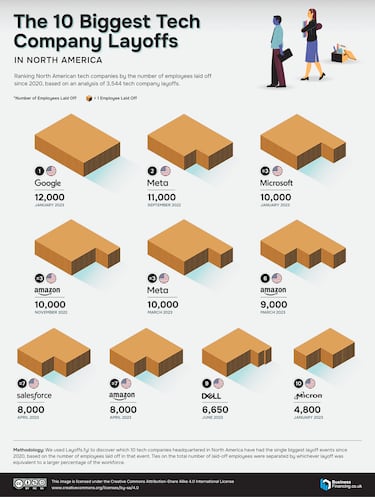The US companies in the tech sector with the largest mass layoffs since 2020
The tech sector is wracked with crisis with tens of thousands of workers let go since the covid-19 pandemic with one company in particular making headlines.


The covid-19 pandemic triggered a wave of job instability across nearly every sector. The tech industry, which had expanded rapidly to meet the increased demand for digital services during lockdowns, then faced significant layoffs as the market adjusted post-pandemic.
Big Tech companies, including giants like Amazon, Meta, and Apple, did a lot of the damage. These companies had hired extensively to support the surge in remote work and online activities. However, as the pandemic’s impact waned, these firms initiated large-scale layoffs. Google’s January 2023 layoff of 12,000 employees stands out as the largest single layoff event in the tech sector since 2020.
In 2023 alone, nearly 2,000 tech companies laid off over 260,000 employees. The trend of layoffs continued into 2024, with numerous tech companies worldwide reducing their workforce.
BusinessFinancingUK has created graphics in order to visualise the actions taken by tech firms in the last three years.

Why these companies let so many workers go, in more detail
With the mass layoffs, it could be supposed that these big tech comapnies are struggling in 2024. However, stocks of Google, Meta, and Microsoft have all risen massively in the last 12 months, by 23%, 14%, and 43% respectively. If anything, these companies have been rewarded by investors for sacking their staff. Microsoft hit a valuation of $3 trillion earlier this year, becoming only the second comapny to have ever done so.
“There is a herding effect in tech,” said Jeff Shulman, a professor at the University of Washington’s Foster School of Business, back in January. “The layoffs seem to be helping their stock prices, so these companies see no reason to stop.”
Related stories
The Bureau of Labor Statistics classifies tech-oriented jobs under the broad category of “Computer and Mathematical Occupations.” In 2022, only 3.3% of these professionals were union members, much lower than the national average. This gives the workers very little bargaining power if the company decides to force them out.
.


Complete your personal details to comment